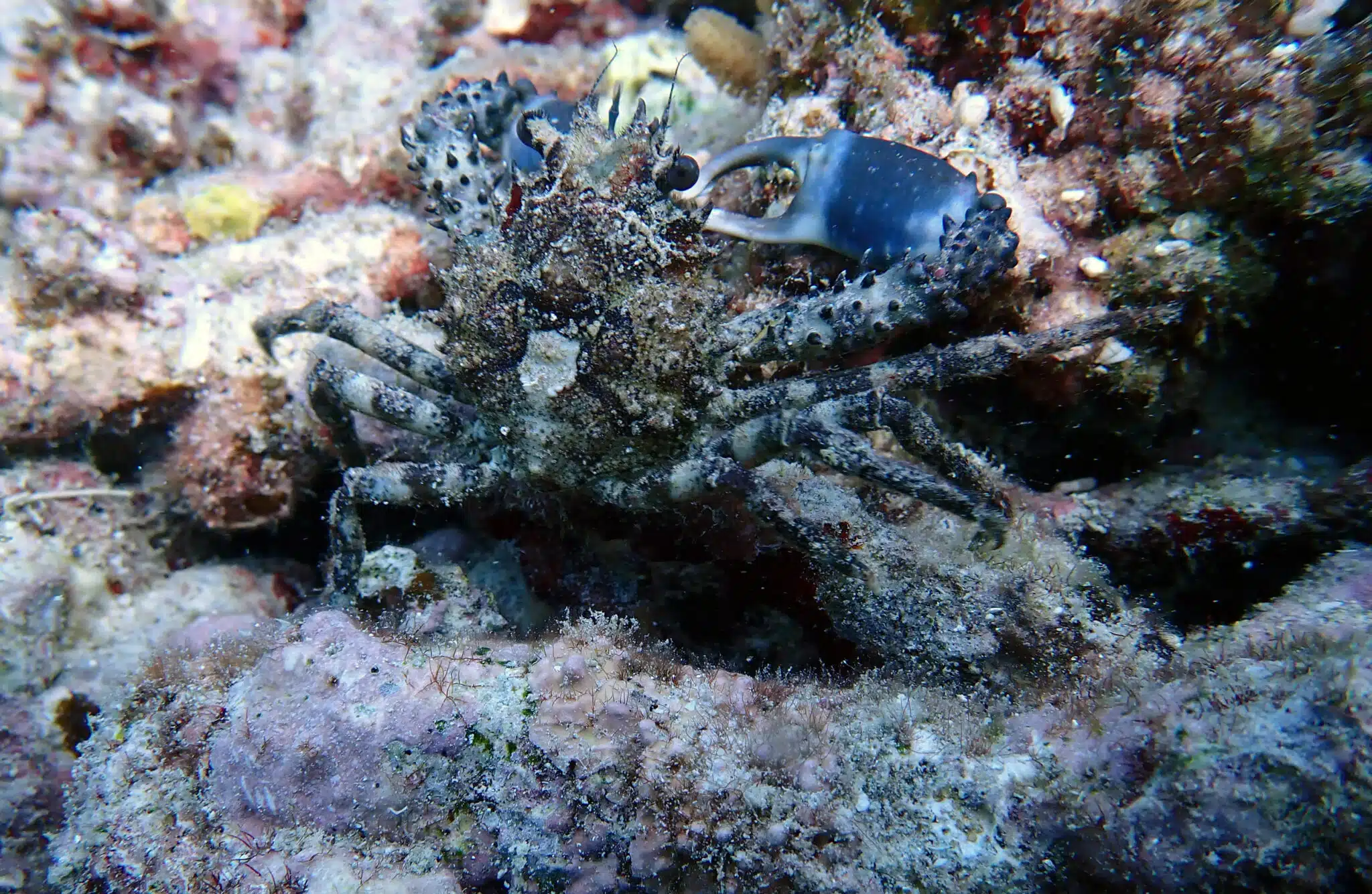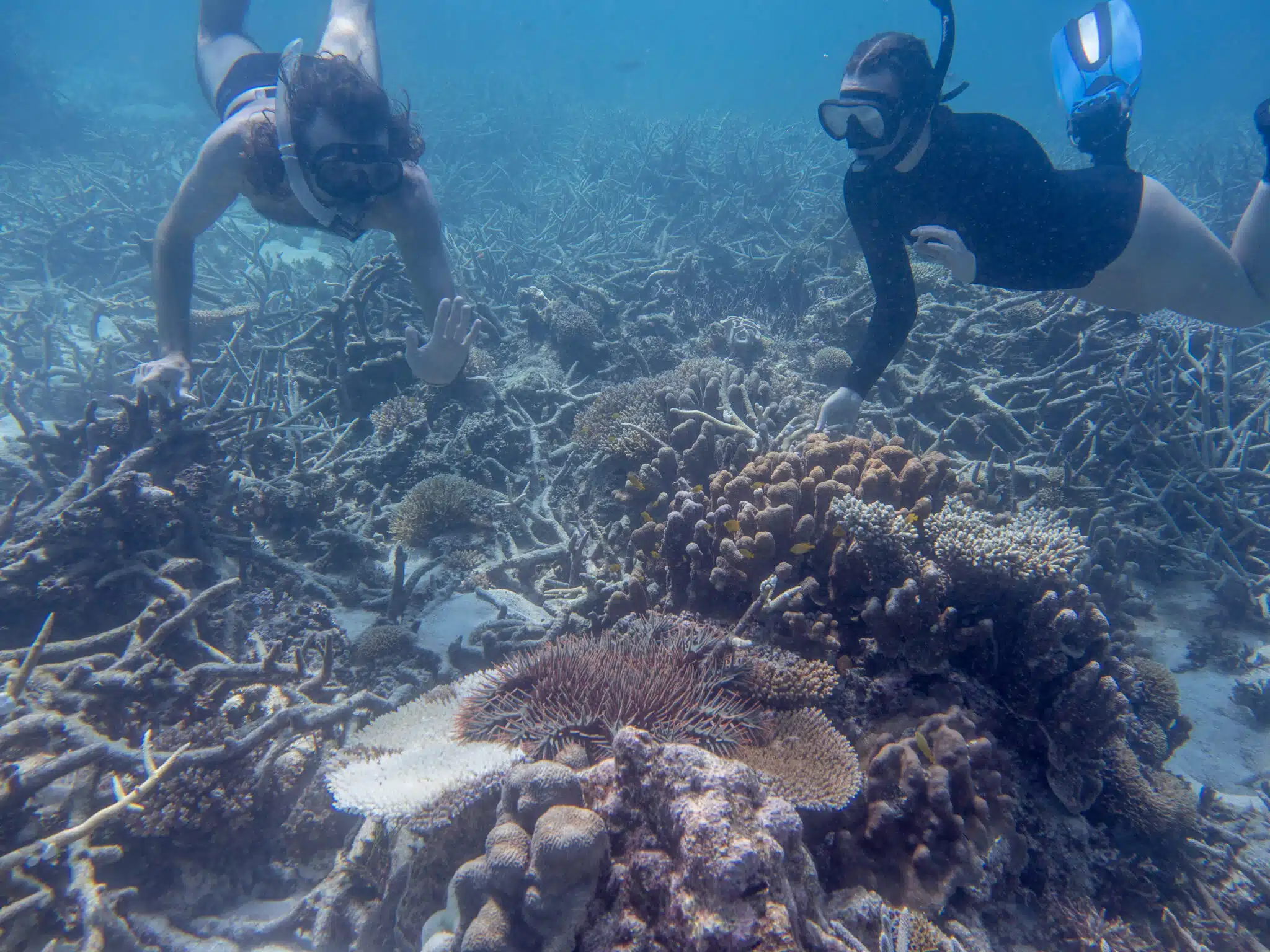There’s a certain species of crab that really likes to munch on the crown-of-thorns starfish on Australia’s Great Barrier Reef, scientists have found.
Researchers from the University of Queensland have identified natural predators which could help fight outbreaks of the coral-eating crown-of-thorns starfish.
PhD candidate Amelia Desbiens from UQ’s School of Biological Sciences tested more than 100 species of crabs, shrimps, worms, snails and small fishes and found one species was a standout at eating juvenile COTS.
Desbiens said:
“The red decorator crab – or Schizophrys aspera – was by far the most consistent predator consuming COTS in 89 per cent of the feeding trials.
“We were surprised by its voracity – each red decorator crab devoured more than five COTS per day while most other species barely ate a single one.
“It’s one of the best predators of COTS we’ve seen and could be a natural buffer against future outbreaks on the reef.
“We also saw 10 other species of crabs eat juvenile COTS fairly consistently, while other animals, including the short-tailed latirus sea snail and the iridescent fireworm, were less enthusiastic eaters.”
Coral rubble or dead coral is the preferred home of juvenile COTS, so the scientists searched for and collected potential predators that had, until now, flown under the radar.

They then introduced juvenile COTS to the predators in small tanks and observed their feeding behavior over several days.
Desbiens said it had been suspected that the presence of specific predators could explain why some reefs escape COTS outbreaks:
“One of the problems is that predators and their rates of predation on COTS aren’t well understood.
“Few animals successfully eat adult COTS but they are vulnerable when young because they are small and lack toxic spines to defend themselves.
“This makes it the perfect time for predators to strike and it is an opportunity for researchers and managers to understand a natural process that could reduce COTS numbers.
“COTS are mass-reproducers and can develop into large populations so it’s vital we find a way to deal with outbreaks quickly.”

Senior author Dr. Kenny Wolfe said research into the role the red decorator crab plays in helping to protect coral reefs would continue:
“We’d like to conduct broader surveys on the Great Barrier Reef across areas with and without outbreaks to evaluate whether the presence of this crab can help predict the chance of COTS gaining a foothold.
“This preliminary study sets us on the right path to resolving the role naturally existing predators could play in controlling COTS outbreaks.”
The research is published in the journal Coral Reefs.

